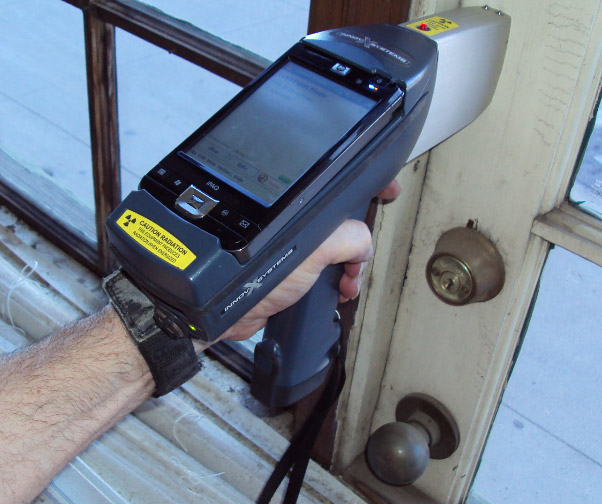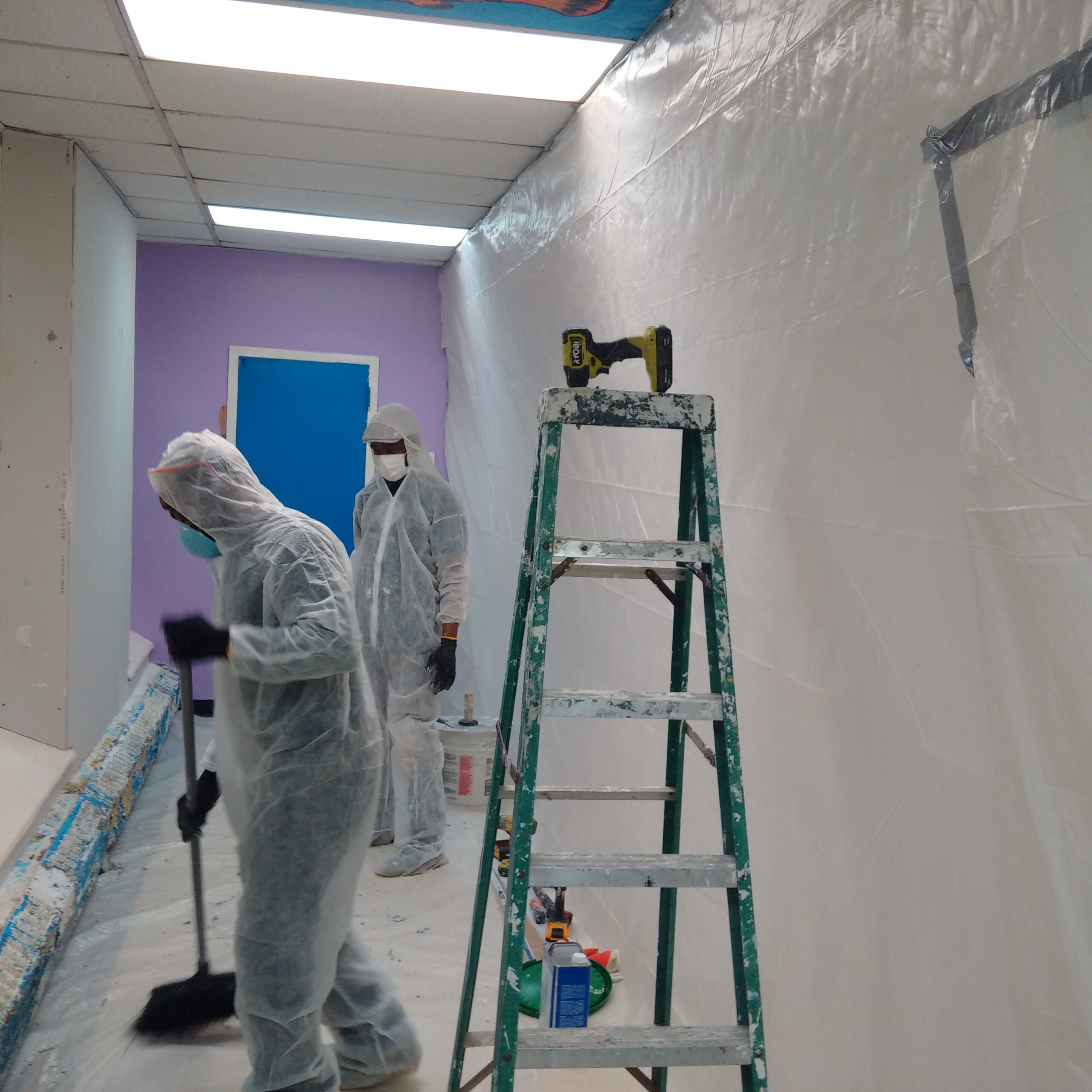Specialist Lead Violation Removal in NYC-- Safeguard Versus Health Hazards
Specialist Lead Violation Removal in NYC-- Safeguard Versus Health Hazards
Blog Article
Step-by-Step Process for Successful Lead Infraction Removal
Following this, adherence to government and state policies is extremely important to creating an effective removal plan. The real remediation calls for proficient personnel to apply these plans while purely complying with safety and security procedures. What takes place after the remediation is finished?

Detection and Evaluation
Discovery and evaluation are critical steps in the removal of lead offenses. To ensure an effective remediation procedure, it is crucial to conduct an extensive exam of the setting where potential lead exposure exists.
Once detection is achieved, a detailed evaluation needs to be taken on. This consists of reviewing the level and severity of contamination, as well as identifying populations at risk, particularly children and pregnant females. Threat analyses often entail tasting and research laboratory evaluation, ecological surveys, and health and wellness effect studies. The gathered information need to be diligently recorded to support the development of an effective removal technique (Lead Violation Removal in NYC).
Furthermore, it is important to prioritize locations with the greatest degrees of contamination and those that present the biggest health dangers. Effective interaction with stakeholders, including home owners, citizens, and public health authorities, is important for ensuring that all celebrations are informed regarding the searchings for and the subsequent actions required for remediation. This initial discovery and evaluation phase lays the groundwork for an effective lead offense removal procedure.

Lawful and Regulative Compliance
Navigating the landscape of legal and regulatory compliance is a pivotal aspect of effective lead offense remediation. Conformity guarantees not just the safety of affected populaces but likewise the credibility and lawful standing of the organization liable for removal.
State and local laws can vary, often enforcing added commitments or even more strict standards. Therefore, a detailed understanding of all relevant lawful frameworks is vital. This includes careful paperwork of all remediation tasks to demonstrate conformity. Failure to comply with these regulations can result in serious charges, including substantial penalties, lawful action, and reputational damages.
Involving legal specialists focused on ecological legislation can assist in navigating these intricacies. Routine training and qualification for all employees associated with the removal process are likewise obligatory to make certain adherence to security and regulatory standards. By prioritizing legal and governing conformity, organizations can successfully alleviate threats and achieve an effective removal outcome.
Planning the Removal
Properly intending the removal of lead offenses starts with a complete assessment of the contaminated site. This initial assessment needs to consist of a detailed website examination to identify the level and concentration of lead contamination. Comprehensive tasting and research laboratory evaluation are critical to create an exact contamination profile. This data-driven approach makes certain that removal initiatives are properly targeted and reliable.
When the contamination is mapped, a risk evaluation must be carried out to review prospective health dangers to human beings and the environment. Lead Violation Removal in NYC. This assessment should take into consideration factors such as direct exposure paths, populace vulnerability, and ecological influences. The understandings gathered will form the basis for selecting a proper removal method
Consequently, establishing clear, possible goals for the removal project is vital. These goals must line up with regulatory standards and stakeholder expectations to make certain compliance and community acceptance. Creating an in-depth remediation strategy that outlines techniques, timelines, and resource allotment will promote an organized strategy to the cleanup process.
Additionally, it is vital to involve with stakeholders early and preserve transparent interaction throughout the planning stage. This consists of informing local areas, getting needed licenses, and coordinating with regulatory firms to make sure all legal and procedural needs are satisfied. A well-crafted remediation strategy not only deals with the contamination effectively yet likewise builds trust fund and teamwork among all events included.
Performing the Removal
With a well-structured remediation strategy in location, the focus moves to the actual implementation of the remediation tasks. This phase entails mobilizing the essential resources, consisting of proficient personnel, customized equipment, and high-grade materials. Begin by plainly delineating duties and responsibilities to make certain responsibility and smooth coordination amongst employee.
The first action in implementation is to safeguard the site. This includes establishing control areas to stop lead dirt and debris from dispersing, along with employing air purification systems to keep air high quality. Next off, continue with the removal of lead-based materials. Use approaches such as wet scuffing, chemical removing, or encapsulation, relying on the seriousness and place of the contamination. It is essential to stick to safety and security protocols, including using individual safety tools (PPE) and proper disposal of harmful materials.
Throughout the removal procedure, conduct periodic inspections and air quality keeping track of to make have a peek here sure conformity with regulative requirements. Efficient interaction with stakeholders, consisting of homeowner and owners, is crucial to keep them informed of progress and any unexpected developments. By meticulously adhering to these actions, the removal activities can be performed efficiently and effectively, ultimately mitigating lead threats.
Post-Remediation Approaches
Post-remediation methods play an important function in guaranteeing the long-term success of lead offense removal efforts. These strategies incorporate continuous tracking, maintenance, and area education to avoid future lead direct exposure and make sure a risk-free environment.
First, normal tracking is essential. This entails regular testing of the formerly affected locations to guarantee that lead degrees stay within safe restrictions. Home proprietors should develop a schedule for these examinations, ideally in cooperation with certified ecological professionals.

Third, informing the area plays a pivotal function in sustaining the advantages of remediation. Citizens and home supervisors must be educated regarding the threats of lead exposure and the ideal practices for keeping a lead-safe environment. Workshops, informative handouts, and neighborhood conferences can be effective tools for sharing this information.
Final Thought
Effective lead violation remediation requires an extensive, methodical technique including discovery and Lead Paint Removal Service evaluation of contamination, adherence to lawful and regulative requirements, careful preparation, and efficient execution of remediation basics efforts. This methodical procedure emphasizes the relevance of thoroughness and alertness in addressing and mitigating lead contamination.
Report this page